Orbital Fat Loss Before And After. Most dermal fillers are lab-made substances. Healthcare providers inject dermal fillers (also called facial fillers) to plump up skin that's losing volume due to aging. Orbital fat prolapse consists on the extrusion of intraconal and extraconal orbital fat to a space outside it's anatomical bed. What's the difference between a fat transfer and dermal fillers? Fillers also smooth away fine lines and wrinkles, making them less noticeable. Furthermore, I think that you are subconsciously elevating your eyebrows to compensate for this. Orbital fat occupies the space surrounding the extraocular muscles and the globe—a protective cushion for the eye. The orbital fat is comprised of two compartments: intraconal and extraconal. Depending on the location it can have different manifestations.
Orbital Fat Loss Before And After Neither infection involves the globe itself.


Analysis of the scans included qualitative estimates of the contribution of the orbital fat and extraocular muscle volumes to the total orbital soft tissue volume and the localization of large pockets of orbital fat. Orbital Fat Loss Before And After.
It is a benign condition and it can happen towards the intracranial space, the infratemporal fossa or, most commonly, the subconjunctival space. The authors believe that orbital contents also may be decompressed by. Orbital fat prolapse consists on the extrusion of intraconal and extraconal orbital fat to a space outside it's anatomical bed. It is a common sign of periocular aging and is often seen in middle-aged and elderly people. B Horizontal and coronal CT images after surgery. Yearly postoperative photography was performed on subjects with successful results.
Purpose: Topical prostaglandin analogs (PGAs) are common treatment for primary open-angle glaucoma (POAG) but reportedly may cause adnexal fat atrophy. Orbital Fat Loss Before And After Yearly postoperative photography was performed on subjects with successful results.
Orbital Fat Loss Before And After B Horizontal and coronal CT images after surgery.
Most dermal fillers are lab-made substances. What's the difference between a fat transfer and dermal fillers? Dermatochalasis is a term used to describe the presence of loose and redundant eyelid skin. Although more dramatically seen in the upper eyelids, dermatochalasis can also affect lower eyelids as well. It is a common sign of periocular aging and is often seen in middle-aged and elderly people. It is a benign condition and it can happen towards the intracranial space, the infratemporal fossa or, most commonly, the subconjunctival space. Of course, the orbital fat loss does not essentially indicate something bad. Orbital fat occupies the space surrounding the extraocular muscles and the globe—a protective cushion for the eye. The patients underwent modified transconjunctival orbital fat decompression surgery. Especially such fat loss is visible below the eyes, causing deepening.Depending on the location it can have different manifestations. Orbital Fat Loss Before And After.
The authors believe that orbital contents also may be decompressed by. Orbital Fat Loss Before And After.
Of course, the orbital fat loss does not essentially indicate something bad. Orbital fat occupies the space surrounding the extraocular muscles and the globe—a protective cushion for the eye. From lash serum orbital fat loss to changes in eye color to eye irritation from lash serums, doctors recommend proceeding with caution when introducing these products into your routine. The few who had mUltiple fat decompressions were scanned before each surgical procedure. Subcutaneous Fat Loss (continued) • Orbital Fat Pads o Loss of bulge under eyes (fat pads), characterized by hollow eye Triceps • Triceps o Palpate (pinch skin) between thumb and forefinger to determine the amount of fat present • Anterior Low Ribs o Ribs visible in patients with fat loss Orbital Fat Pads Anterior Low Ribs Orbital cellulitis is an infection involving the contents of the orbit (fat and extraocular muscles). Fillers also smooth away fine lines and wrinkles, making them less noticeable. Healthcare providers inject dermal fillers (also called facial fillers) to plump up skin that's losing volume due to aging.
If it is too stark and has occurred recently, then it may be a cause for concern. Orbital Fat Loss Before And After Healthcare providers inject dermal fillers (also called facial fillers) to plump up skin that's losing volume due to aging.
Furthermore, I think that you are subconsciously elevating your eyebrows to compensate for this. Orbital Fat Loss Before And After.
Background:Orbital decompression has been used to describe surgical procedures that remove some portion of the orbital walls to reduce pressure on the orbital contents. The orbital fat is comprised of two compartments: intraconal and extraconal. Most dermal fillers are lab-made substances. It is a common sign of periocular aging and is often seen in middle-aged and elderly people. Dermatochalasis is a term used to describe the presence of loose and redundant eyelid skin. In a few cases, the extraocular Orbital fat loss is a term used to define fat loss around the eyes. What's the difference between a fat transfer and dermal fillers? The patients underwent modified transconjunctival orbital fat decompression surgery. Of course, the orbital fat loss does not essentially indicate something bad. Orbital fat prolapse consists on the extrusion of intraconal and extraconal orbital fat to a space outside it's anatomical bed.
Although more dramatically seen in the upper eyelids, dermatochalasis can also affect lower eyelids as well. Orbital Fat Loss Before And After.
Here a lot depends on genetics. The few who had mUltiple fat decompressions were scanned before each surgical procedure. The patients underwent modified transconjunctival orbital fat decompression surgery. From lash serum orbital fat loss to changes in eye color to eye irritation from lash serums, doctors recommend proceeding with caution when introducing these products into your routine. Especially such fat loss is visible below the eyes, causing deepening. Orbital fat prolapse consists on the extrusion of intraconal and extraconal orbital fat to a space outside it's anatomical bed. It is a benign condition and it can happen towards the intracranial space, the infratemporal fossa or, most commonly, the subconjunctival space. Background:Orbital decompression has been used to describe surgical procedures that remove some portion of the orbital walls to reduce pressure on the orbital contents. Dermatochalasis is a term used to describe the presence of loose and redundant eyelid skin. We asked if patients with POAG treated with PGAs have abnormalities in orbital fat volume (OFV).
Orbital fat occupies the space surrounding the extraocular muscles and the globe—a protective cushion for the eye. Orbital Fat Loss Before And After.
Of course, the orbital fat loss does not essentially indicate something bad. It is a common sign of periocular aging and is often seen in middle-aged and elderly people. We asked if patients with POAG treated with PGAs have abnormalities in orbital fat volume (OFV). From lash serum orbital fat loss to changes in eye color to eye irritation from lash serums, doctors recommend proceeding with caution when introducing these products into your routine. A postoperative orbital CT revealed that the exophthalmos had significantly receded, most of the bone in the medial orbital wall's posterior part had vanished, the middle and posterior parts of the orbital cavity had enlarged, the fat herniation was uniform, and the extraocular muscle was not. Most dermal fillers are lab-made substances. Here a lot depends on genetics. Dermatochalasis is a term used to describe the presence of loose and redundant eyelid skin. The patients underwent modified transconjunctival orbital fat decompression surgery. Subcutaneous Fat Loss (continued) • Orbital Fat Pads o Loss of bulge under eyes (fat pads), characterized by hollow eye Triceps • Triceps o Palpate (pinch skin) between thumb and forefinger to determine the amount of fat present • Anterior Low Ribs o Ribs visible in patients with fat loss Orbital Fat Pads Anterior Low Ribs Orbital cellulitis is an infection involving the contents of the orbit (fat and extraocular muscles).
Most dermal fillers are lab-made substances. Orbital Fat Loss Before And After.
Orbital fat prolapse consists on the extrusion of intraconal and extraconal orbital fat to a space outside it's anatomical bed. The patients underwent modified transconjunctival orbital fat decompression surgery. What's the difference between a fat transfer and dermal fillers? Subcutaneous Fat Loss (continued) • Orbital Fat Pads o Loss of bulge under eyes (fat pads), characterized by hollow eye Triceps • Triceps o Palpate (pinch skin) between thumb and forefinger to determine the amount of fat present • Anterior Low Ribs o Ribs visible in patients with fat loss Orbital Fat Pads Anterior Low Ribs Orbital cellulitis is an infection involving the contents of the orbit (fat and extraocular muscles). Background:Orbital decompression has been used to describe surgical procedures that remove some portion of the orbital walls to reduce pressure on the orbital contents. The orbital fat is comprised of two compartments: intraconal and extraconal. It is a common sign of periocular aging and is often seen in middle-aged and elderly people. We asked if patients with POAG treated with PGAs have abnormalities in orbital fat volume (OFV). Dermatochalasis is a term used to describe the presence of loose and redundant eyelid skin. Of course, the orbital fat loss does not essentially indicate something bad.
In a few cases, the extraocular Orbital fat loss is a term used to define fat loss around the eyes. Orbital Fat Loss Before And After.
Fillers also smooth away fine lines and wrinkles, making them less noticeable. The few who had mUltiple fat decompressions were scanned before each surgical procedure. Background:Orbital decompression has been used to describe surgical procedures that remove some portion of the orbital walls to reduce pressure on the orbital contents. Dermatochalasis is a term used to describe the presence of loose and redundant eyelid skin. The orbital fat is comprised of two compartments: intraconal and extraconal. Here a lot depends on genetics. From lash serum orbital fat loss to changes in eye color to eye irritation from lash serums, doctors recommend proceeding with caution when introducing these products into your routine. Subcutaneous Fat Loss (continued) • Orbital Fat Pads o Loss of bulge under eyes (fat pads), characterized by hollow eye Triceps • Triceps o Palpate (pinch skin) between thumb and forefinger to determine the amount of fat present • Anterior Low Ribs o Ribs visible in patients with fat loss Orbital Fat Pads Anterior Low Ribs Orbital cellulitis is an infection involving the contents of the orbit (fat and extraocular muscles). What's the difference between a fat transfer and dermal fillers? Orbital fat prolapse consists on the extrusion of intraconal and extraconal orbital fat to a space outside it's anatomical bed.

Dermatochalasis is a term used to describe the presence of loose and redundant eyelid skin. Orbital Fat Loss Before And After.
Background:Orbital decompression has been used to describe surgical procedures that remove some portion of the orbital walls to reduce pressure on the orbital contents. Especially such fat loss is visible below the eyes, causing deepening. It is a common sign of periocular aging and is often seen in middle-aged and elderly people. What's the difference between a fat transfer and dermal fillers? We asked if patients with POAG treated with PGAs have abnormalities in orbital fat volume (OFV). The few who had mUltiple fat decompressions were scanned before each surgical procedure. A postoperative orbital CT revealed that the exophthalmos had significantly receded, most of the bone in the medial orbital wall's posterior part had vanished, the middle and posterior parts of the orbital cavity had enlarged, the fat herniation was uniform, and the extraocular muscle was not. Fillers also smooth away fine lines and wrinkles, making them less noticeable. Here a lot depends on genetics. Subcutaneous Fat Loss (continued) • Orbital Fat Pads o Loss of bulge under eyes (fat pads), characterized by hollow eye Triceps • Triceps o Palpate (pinch skin) between thumb and forefinger to determine the amount of fat present • Anterior Low Ribs o Ribs visible in patients with fat loss Orbital Fat Pads Anterior Low Ribs Orbital cellulitis is an infection involving the contents of the orbit (fat and extraocular muscles).

The orbital fat is comprised of two compartments: intraconal and extraconal. Orbital Fat Loss Before And After.
What's the difference between a fat transfer and dermal fillers? Of course, the orbital fat loss does not essentially indicate something bad. The few who had mUltiple fat decompressions were scanned before each surgical procedure. Here a lot depends on genetics. From lash serum orbital fat loss to changes in eye color to eye irritation from lash serums, doctors recommend proceeding with caution when introducing these products into your routine. It is a benign condition and it can happen towards the intracranial space, the infratemporal fossa or, most commonly, the subconjunctival space. Orbital fat prolapse consists on the extrusion of intraconal and extraconal orbital fat to a space outside it's anatomical bed. It is a common sign of periocular aging and is often seen in middle-aged and elderly people. Fillers also smooth away fine lines and wrinkles, making them less noticeable. Especially such fat loss is visible below the eyes, causing deepening.

Fillers also smooth away fine lines and wrinkles, making them less noticeable. Orbital Fat Loss Before And After.
It is a benign condition and it can happen towards the intracranial space, the infratemporal fossa or, most commonly, the subconjunctival space. Background:Orbital decompression has been used to describe surgical procedures that remove some portion of the orbital walls to reduce pressure on the orbital contents. What's the difference between a fat transfer and dermal fillers? Orbital fat prolapse consists on the extrusion of intraconal and extraconal orbital fat to a space outside it's anatomical bed. The patients underwent modified transconjunctival orbital fat decompression surgery. A postoperative orbital CT revealed that the exophthalmos had significantly receded, most of the bone in the medial orbital wall's posterior part had vanished, the middle and posterior parts of the orbital cavity had enlarged, the fat herniation was uniform, and the extraocular muscle was not. The few who had mUltiple fat decompressions were scanned before each surgical procedure. From lash serum orbital fat loss to changes in eye color to eye irritation from lash serums, doctors recommend proceeding with caution when introducing these products into your routine. We asked if patients with POAG treated with PGAs have abnormalities in orbital fat volume (OFV). Especially such fat loss is visible below the eyes, causing deepening.

It is a benign condition and it can happen towards the intracranial space, the infratemporal fossa or, most commonly, the subconjunctival space. Orbital Fat Loss Before And After.
Of course, the orbital fat loss does not essentially indicate something bad. We asked if patients with POAG treated with PGAs have abnormalities in orbital fat volume (OFV). The patients underwent modified transconjunctival orbital fat decompression surgery. It is a common sign of periocular aging and is often seen in middle-aged and elderly people. Orbital fat prolapse consists on the extrusion of intraconal and extraconal orbital fat to a space outside it's anatomical bed. The few who had mUltiple fat decompressions were scanned before each surgical procedure. Background:Orbital decompression has been used to describe surgical procedures that remove some portion of the orbital walls to reduce pressure on the orbital contents. What's the difference between a fat transfer and dermal fillers? Subcutaneous Fat Loss (continued) • Orbital Fat Pads o Loss of bulge under eyes (fat pads), characterized by hollow eye Triceps • Triceps o Palpate (pinch skin) between thumb and forefinger to determine the amount of fat present • Anterior Low Ribs o Ribs visible in patients with fat loss Orbital Fat Pads Anterior Low Ribs Orbital cellulitis is an infection involving the contents of the orbit (fat and extraocular muscles). From lash serum orbital fat loss to changes in eye color to eye irritation from lash serums, doctors recommend proceeding with caution when introducing these products into your routine.


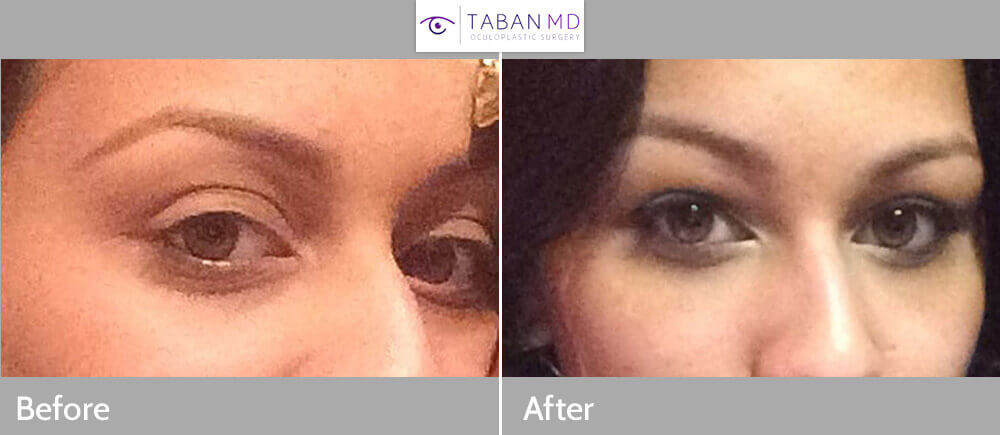

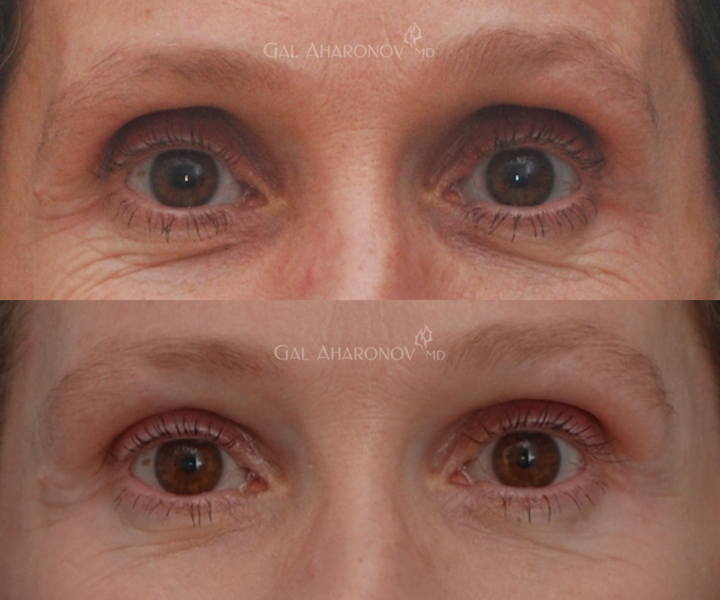

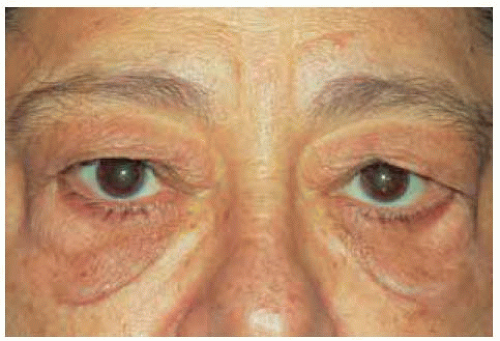

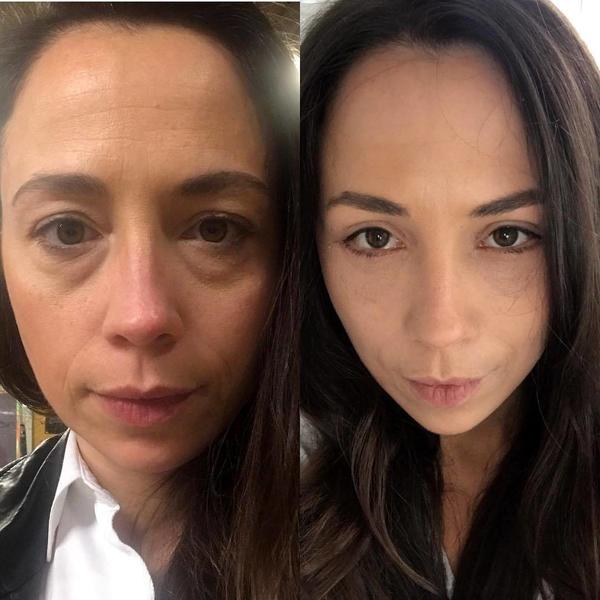
&w=538&do-not-index)


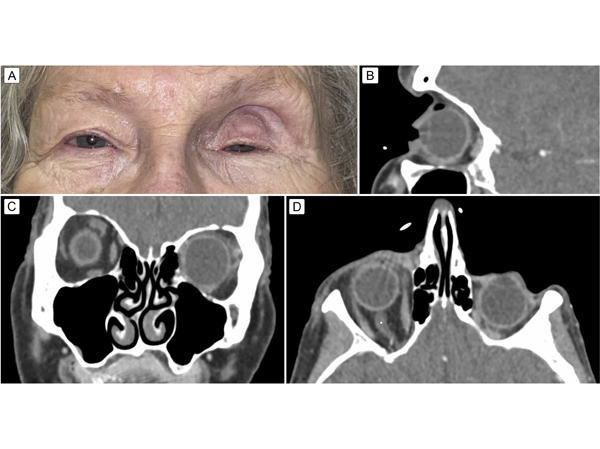
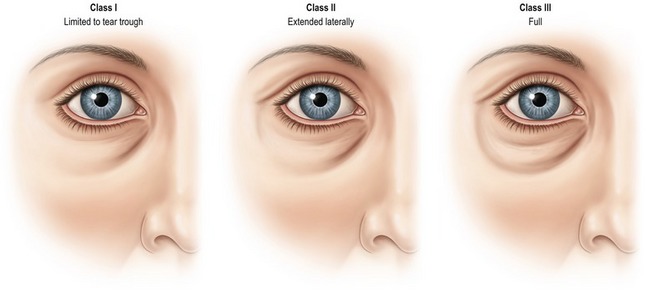




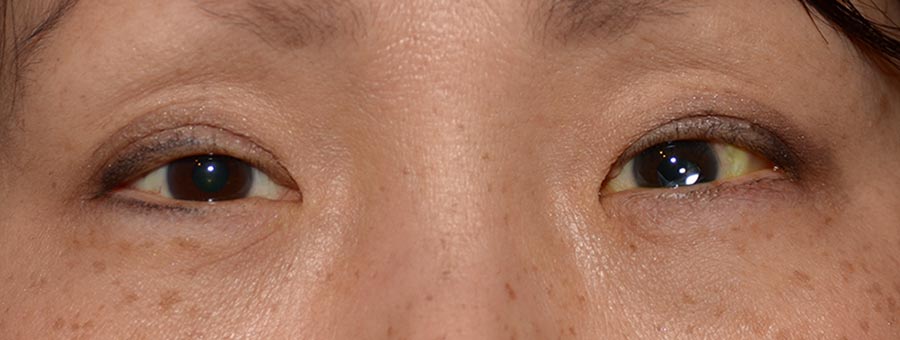














No comments:
Post a Comment